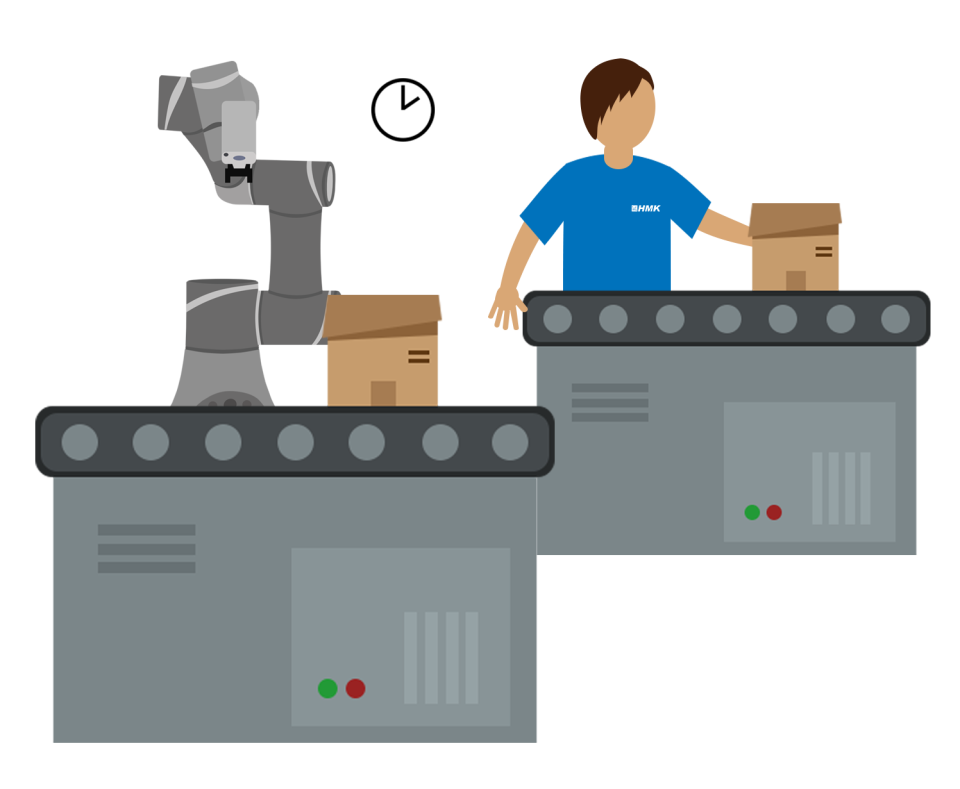- Blog
- Are Cobots stigmatised by definition?
Are Cobots stigmatised by definition?
What comes to mind when somebody says the term "Collaborative Robot": robots and humans working harmoniously side by side or a scene from the Will Smith film "I Robot"? Whatever way you are swayed this article aims to discuss the stigma attached to the name Cobot or Collaborative Robot.
The English Oxford Living Dictionaries defines collaboration as 'The action of working with someone to produce something'. It is therefore understandable where the trepidation airs from with regards to the implementation. But do all applications where Cobots can be deployed truly require full human-robot interaction?
Collaborative or not Collaborative?
A working group consisting of the HSSMI and some leading automotive manufacturers came together to create a document called Collaborative Applications in Manufacturing. This helped identify the fact that there aren’t simply just collaborative applications.
In any Cobot specification identifying the mode of application is key. The modes can be split into 3 main areas:
- Co-existence
- Co-operation
- Collaboration
Co-Existence
If the robot can operate autonomously, without the need for direct interaction with people, or simply operating in the same room it is known as Co-existence.


Co-operation
When an operator's tasks take them into the operating zone of a Cobot, but no direct interaction it is called Co-operation.

Collaboration
Human interaction with a Cobot develops a Collaborative application. Where the robot does not replace the human, rather enhances their proficiency. With these definitions, it should be a straightforward task to assign Cobot applications their mode.
How does this help?
Initially, it allows the mindset of the integrators to be aligned with the principle risks associated with the application. Quickly determining the key factors to enable safe integration and operation of a Cobot. Distilling the applications to 3 levels gives the opportunity for the Cobot community to explain the abilities of the Collaborative Robots in a way that does not pigeon hole them to one implementation; thus, changing the views on Collaborative Robots to light weight, easy to redeploy, simple to program robots that can be used in a range of applications.
Risk Assessment
So, you now know the mode of your Collaborative robot's operation, now what? Well, no matter what there will always need to be a risk assessment based on the tasks at hand. This will be guided by the mode selection and therefore how much of the ISO/TS 15066 technical standard will need to be closely adhered to from a risk reduction view point. In short, even with the Collaborative name, the easy to program robots shouldn’t be segmented to niche sections of applications and should be allowed to act as an enabler to streamline productivity throughout the production process.
If you would like more information, contact us. Get in touch with our Automation Architects who will be happy to help!









